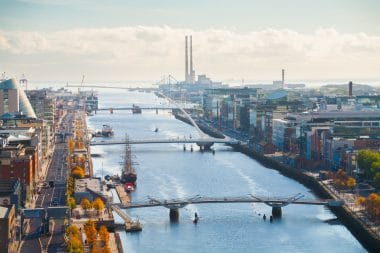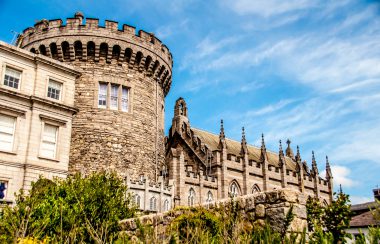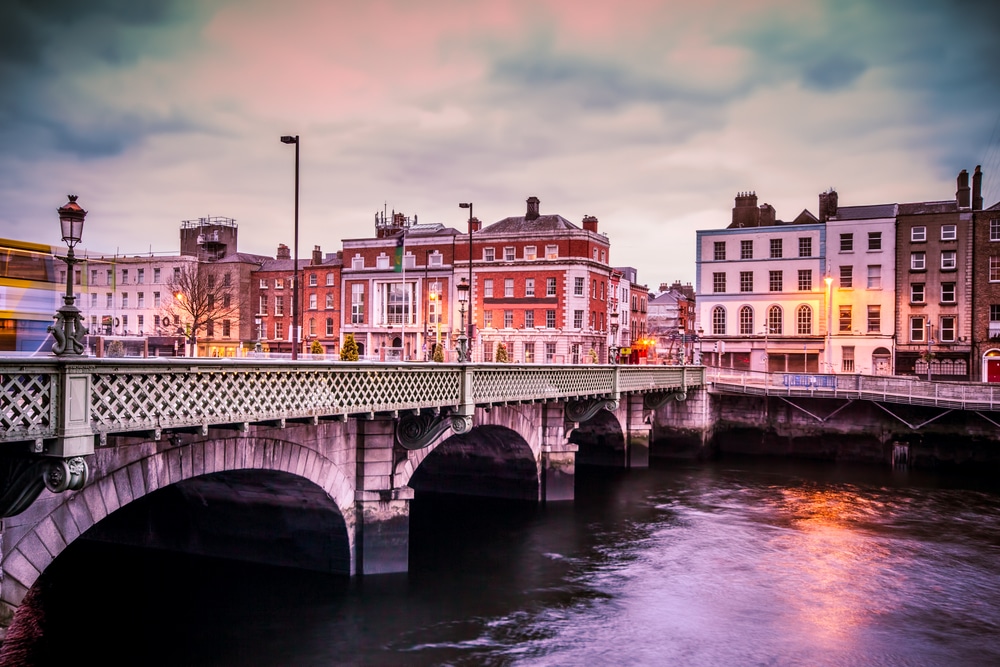With about 554,000 inhabitants, Dublin is not only the largest city in the Republic of Ireland, but also its capital. Its roots go back 2000 years, when the settlement of Eblana was first noted by a Roman cartographer at the current location of Dublin. However, Dublin was not officially founded until around the year 841 by the Vikings, who gave the place the sonorous name “Dubh Linn”, which means “dark swamp”. From 1711, the city was under the rule of the English crown and became the second most important city after London. The Easter Rising, which was suppressed in 1916, marked the beginning of the end of British rule and thus the independence of Ireland.
Northside and Southside Dublins

St. Patrick’s Cathedral

National History Museum
In addition to its official name, the museum also has a nickname, due to the many stuffed animals that are exhibited in it, it is also called “The Dead Zoo“.
Opening hours Natural History Museum Dublin |
|
|---|---|
| Tuesday – Saturday | 10:00 a.m. – 5:00 p.m. |
| Sunday | 14:00 – 17:00 |
| Closed on Mondays and public holidays | |
What is special about it is that it has largely not been changed since it was opened 150 years ago and is therefore still in its original state. The same applies to the transfer of knowledge, while many museums now lend audio guides to their visitors, you will look in vain for them here. Rather, a visit to the National History Museum in Dublin is a journey into the Victorian past, where you can marvel at the underwater world, the steps of evolution, the mammals of the world and the Irish fauna. Particularly noteworthy: Admission is free.
Trinity College

Dublin Castle
The castle was built as early as 1711 and served as the seat of the English rulers of Ireland until 1922. The fact that the castle complex looks very modern can be attributed to a large fire in 1684. After this, it was decided not to rebuild the castle grounds true to the original, but to adapt to the prevailing building methods of the time during reconstruction. Of the old building fabric, only the mighty Records Tower remained. Even today, the castle serves as a place for state conceptions and swearing-in. In 2011, for example, the banquet in honour of Queen Elizabeth II took place there in St. Patrick’s Hall. The castle can be visited free of charge and there is the possibility to take part in a guided tour of the walls.
Guinness Storehouse
The Guinness belongs to Ireland like the Oktoberfest to Munich. At the Guinness Storehouse, you can see the history of the brewery and learn about the brewing process. The lease is already on display in the entrance area, which was concluded for 9000 years. At the end of the tour, there is the opportunity to drink a pint included in the entrance fee. If you want to learn more about the brewery, you can attend one of the evening courses offered. Among other things, you will learn how to tap a pint correctly and a guided tour of the brewing section.
Culinary specialties in Dublin
If you travel to Dublin, the best way to start your morning is with an Irish breakfast, which consists of sausages, soda bread, ham, grilled tomatoes and eggs. Another speciality is the “Dublin Coddle”, a stew made from potatoes, shredded ham and sausages. For dessert, you should definitely try the “Porter Cake”, which consists of Guinness, dried fruits and brown sugar. In general, you can not only drink Guinness in Dublin, but often also find it in the country’s typical dishes.
The most important questions about Dublin
What is the population of Dublin?
Dublin has a population of 1.39 million in the region as a whole. Within the city limits live about 540,000 inhabitants
How long does it take to fly from Germany to Dublin?
The average flight time from Frankfurt to Dublin is about 1 hours and 50 minutes. From Munich, the flight takes about 2 hours and 15 minutes. From Dusseldorf to Dublin, the flight time is 1 hour and 40 minutes.
How big is Dublin?
Dublin has an area of 115 km².
What time is it in Dublin?
Dublin is currently 1 hour behind the time in Germany. At 8:00 a.m. in Germany, it is 7:00 a.m. in Dublin.
Holidays in Dublin: The most important information
Important telephone numbers
- Emergency number (police, fire brigade, ambulance): 112 or 999
- German Embassy in Dublin: +353 1 277 6100
- Dublin Tourist Information: +353 1 605 7700
German Doctors
- Dr. Christian Jessen: Pembroke Road, Ballsbridge, Dublin 4, +353 1 660 2951
- Dr. Andreas Koerner: The Clinic, 63 Lower Mount Street, Dublin 2, +353 1 676 6566
The most important words with translation
- Hallo – Hello
- Thank you
- Bitte – Please
- Yes – Yes
- Nein – No
- Excuse me / Sorry
- Where is…? – Where is…?
- How much does it cost…? – How much is…?
- Emergency – Emergency
- Doctor – Doctor
- Krankenhaus – Hospital
Holidays
- New Year’s Day: January 1
- St. Patrick’s Day: March 17
- Good Friday: variable (March/April)
- Easter Monday: variable (March/April)
- Labor Day: First Monday in May
- June Bank Holiday: First Monday in June
- August Bank Holiday: First Monday in August
- October Bank Holiday: Last Monday in October
- Christmas: December 25
- St. Stephen’s Day: December 26
Opening hours
- Shops: Usually Monday to Saturday from 9:00 a.m. to 6:00 p.m., Sunday from 11:00 a.m. to 6:00 p.m.
Many shopping centers have longer opening hours. - Supermarkets: Usually daily from 7:00 a.m. to 10:00 p.m.
- Restaurants: Lunch from 12:00 to 15:00, dinner from 18:00 to 22:00.
- Banks: Monday to Friday from 9:30 a.m. to 4:30 p.m.
Airport
- Dublin Airport (DUB): The largest airport in Ireland, about 10 km north of Dublin city centre.
There are regular bus and taxi services to the city centre.
Post / Stamps
- Post offices: In all major districts and shopping centres. Main Post Office (GPO) on O’Connell Street.
Opening hours: Monday to Friday from 9:00 a.m. to 5:30 p.m., Saturday from 9:00 a.m. to 1:00 p.m. - Stamps: Available at the post office and in some kiosks and supermarkets.
- Costs for letters and postcards to Germany: Standard letter up to 50g: approx. 1.70 EUR; Postcard: approx. 1.70 EUR
Safety
- Crime: Dublin is considered safe, but tourists should take common precautions, especially in larger cities and tourist areas.
- Emergency number: 112 or 999
Current
- Voltage: 230 volts
- Sockets: Type G (adapters for European plugs are required)
Tip
- Restaurants: 10-15% of the bill amount is customary if no service charge is included.
- Taxis: Round up the amount or about 10%
- Hotels: 1-2 euros per day for cleaning staff
Customs
- Allowances within the EU: No customs restrictions on personal belongings.
- Alcohol: Maximum 10 liters of spirits, 20 liters of alcoholic beverages with less than 22%, 90 liters of wine, 110 liters of beer.
- Tobacco: 800 cigarettes, 400 cigarillos, 200 cigars, 1 kg of tobacco.


